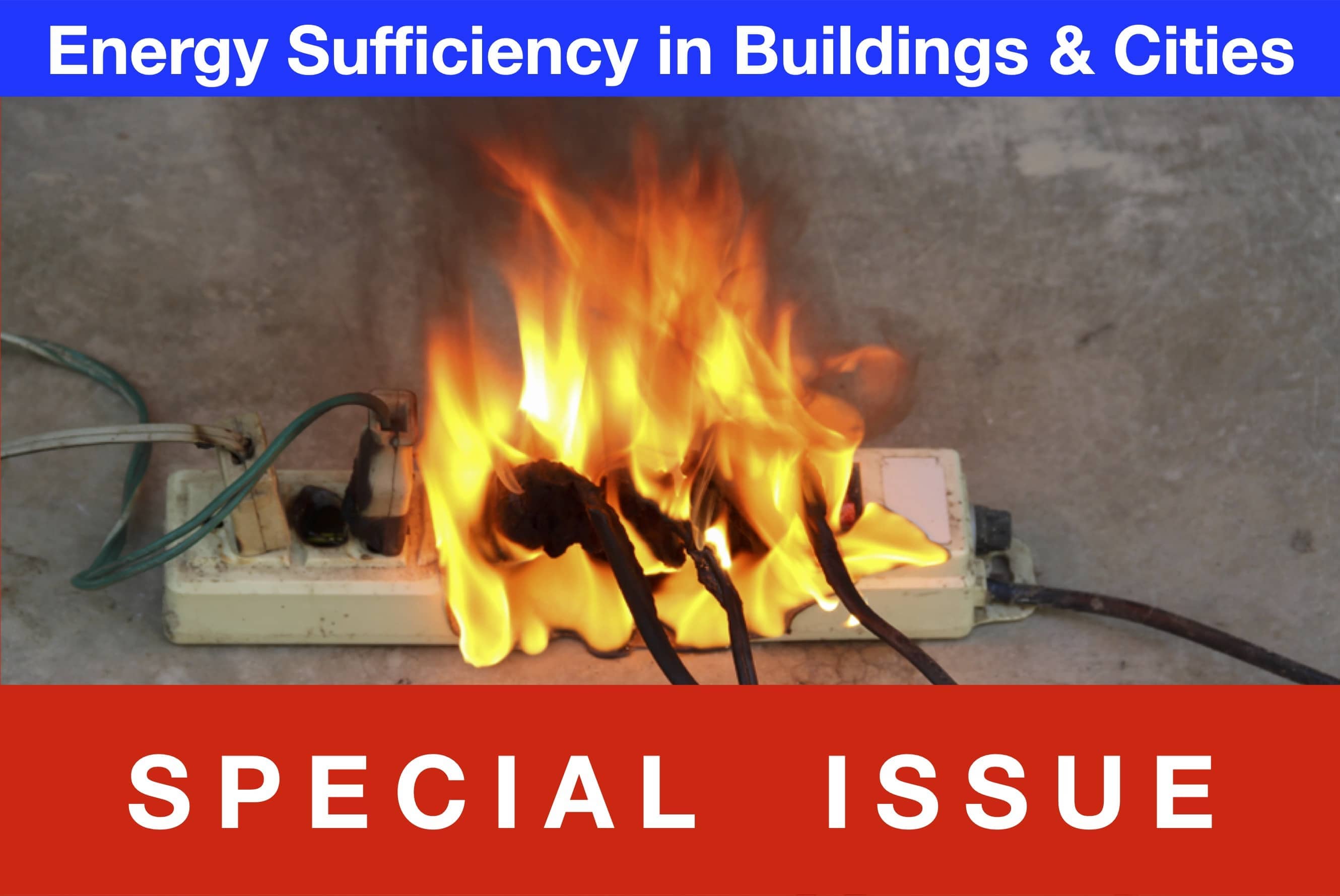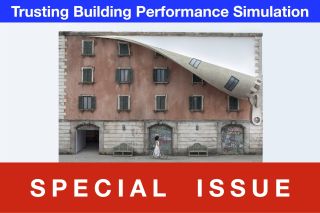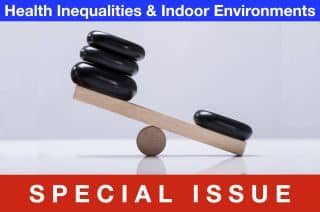
www.buildingsandcities.org/journal-content/special-issues/energy-sufficiency-si.html
Energy Sufficiency in Buildings and Cities

How can conditions be created for decent living standards for all without exceeding planetary limits?
Energy and climate policies have tended to focus on the promotion of energy efficiency and renewable energies, but there is no evidence that these measures alone will be able to meet climate and sustainable development goals. This special issue explores what the concept of sufficiency means for the built environment - both as a floor (minimum) and a ceiling (maximum) to ensure a "good life". Sufficiency is explored in many interconnected issues such as land use and density, space usage (size and adaptability), sharing of goods, services and spaces, and space conditioning (heating, cooling and ventilation) for health.
Guest editors: Tina Fawcett, Sarah Darby & Marlyne Sahakian
The papers in this special issue contribute to shared understandings around sufficiency among diverse actors including professionals and members of civil society; how studies aim at assessing the potential of sufficiency measures; what efforts are being made to learn from and build on existing sufficiency measures, as well as initiatives that seek to experiment with sufficiency; and what conceptual advances are being put forward relevant to sufficiency research and action.
In addition to energy, some papers in this special issue focus on one of the most difficult discussions around sufficiency in housing: reducing housing space per person. It is feasible to frame sufficiency as a way to promote wellbeing and the good life i.e. live better while consuming less.
Other papers help to chart future directions for research and action by relating to theories of justice, focusing on elite consumption, or considering ways to engage in sufficiency with existing material and institutional arrangements.
There is likely to be increased demand for reliable basic modern energy services from hundreds of millions of people who do not yet have access to them. How can these be met in ways that avoid the huge environmental and social costs of the last two centuries? The question of justice is integral to these reflections, particularly justice in recognition - of vulnerabilities, of limited agency, and of unacknowledged over- and under-consumption
Table of contents
Energy sufficiency in buildings and cities: current research, future directions [editorial]
M.
Sahakian, T. Fawcett &
S.
Darby
Living smaller: acceptance, effects and structural factors in the EU
M. Lehner, J.
L. Richter, H. Kreinin, P. Mamut, E. Vadovics, J. Henman, O. Mont & D.
Fuchs
Are people willing to share space? Household preferences in Finland
E. Ruokamo,
E. Kylkilahti, M. Lettenmeier & A. Toppinen
Sufficiency, consumption patterns and limits: a survey of French households
J. Bouillet & C. Grandclément
Imagining sufficiency through collective changes as satisfiers
O. Moynat
& M. Sahakian
Provide or prevent? Exploring sufficiency imaginaries within Danish systems of provision
L. K. Aagaard & T. H.
Christensen
'Rightsize': a housing design game for spatial and energy sufficiency
P. Graham, P.
Nourian, E. Warwick & M. Gath-Morad
US urban land-use reform: a strategy for energy sufficiency
Z. M. Subin,
J. Lombardi, R. Muralidharan, J. Korn, J. Malik, T. Pullen, M. Wei &
Tianzhen Hong
Operationalising energy sufficiency for low-carbon built environments in urbanising India
A. Lall &
G. Sethi
Operationalising building-related energy sufficiency measures in SMEs
I. Fouiteh,
J. D. Cabrera Santelices, A. Susini & M. K. Patel
Implementing housing policies for a sufficient lifestyle
M. Bagheri,
L. Roth, L. Siebke, C. Rohde & H.-J. Linke
Promoting neighbourhood sharing: infrastructures of convenience and community
A. Huber, H.
Heinrichs & M. Jaeger-Erben
New insights into thermal comfort sufficiency in dwellings
G. van
Moeseke, D. De Grave, A. Anciaux, J. Sobczak & G. Wallenborn
Energy sufficiency and recognition justice: a study of household consumption
Alice Guilbert
Structural barriers to sufficiency: the contribution of research on elites
M. Koch, K. Emilsson, J. Lee & H. Johansson
Promoting practices of sufficiency: reprogramming resource-intensive material arrangements
T. H. Christensen, L. K. Aagaard, A.K. Juvik, C. Samson & K. Gram-Hanssen
Latest Peer-Reviewed Journal Content
A framework for 1.5°C-aligned GHG budgets in architecture
G Betti, I Spaar, D Bachmann, A Jerosch-Herold, E Kühner, R Yang, K Avhad & S Sinning
Net zero retrofit of the building stock [editorial]
D Godoy-Shimizu & P Steadman
Co-learning in living labs: nurturing civic agency and resilience
A Belfield
The importance of multi-roles and code-switching in living labs
H Noller & A Tarik
Researchers’ shifting roles in living labs for knowledge co-production
C-C Dobre & G Faldi
Increasing civic resilience in urban living labs: city authorities’ roles
E Alatalo, M Laine & M Kyrönviita
Co-curation as civic practice in community engagement
Z Li, M Sunikka-Blank, R Purohit & F Samuel
Preserving buildings: emission reductions from circular economy strategies in Austria
N Alaux, V Kulmer, J Vogel & A Passer
Urban living labs: relationality between institutions and local circularity
P Palo, M Adelfio, J Lundin & E Brandão
Living labs: epistemic modelling, temporariness and land value
J Clossick, T Khonsari & U Steven
Co-creating interventions to prevent mosquito-borne disease transmission in hospitals
O Sloan Wood, E Lupenza, D M Agnello, J B Knudsen, M Msellem, K L Schiøler & F Saleh
Circularity at the neighbourhood scale: co-creative living lab lessons
J Honsa, A Versele, T Van de Kerckhove & C Piccardo
Positive energy districts and energy communities: how living labs create value
E Malakhatka, O Shafqat, A Sandoff & L Thuvander
Built environment governance and professionalism: the end of laissez-faire (again)
S Foxell
Co-creating justice in housing energy transitions through energy living labs
D Ricci, C Leiwakabessy, S van Wieringen, P de Koning & T Konstantinou
HVAC characterisation of existing Canadian buildings for decarbonisation retrofit identification
J Adebisi & J J McArthur
Simulation and the building performance gap [editorial]
M Donn
Developing criteria for effective building-sector commitments in nationally determined contributions
P Graham, K McFarlane & M Taheri
Reimagining circularity: actions for optimising the use of existing buildings
R Lundgren, R Kyrö, S Toivonen & L Tähtinen
Effective interdisciplinary stakeholder engagement in net zero building design
S Vakeva-Baird, F Tahmasebi, JJ Williams & D Mumovic
Metrics for building component disassembly potential: a practical framework
H Järvelä, A Lehto, T Pirilä & M Kuittinen
The unfitness of dwellings: why spatial and conceptual boundaries matter
E Nisonen, D Milián Bernal & S Pelsmakers
Environmental variables and air quality: implications for planning and public health
H Itzhak-Ben-Shalom, T Saroglou, V Multanen, A Vanunu, A Karnieli, D Katoshevski, N Davidovitch & I A Meir
Exploring diverse drivers behind hybrid heating solutions
S Kilpeläinen, S Pelsmakers, R Castaño-Rosa & M-S Miettinen
Urban rooms and the expanded ecology of urban living labs
E Akbil & C Butterworth
Living with extreme heat: perceptions and experiences
L King & C Demski
A systemic decision-making model for energy retrofits
C Schünemann, M Dshemuchadse & S Scherbaum
Modelling site-specific outdoor temperature for buildings in urban environments
K Cebrat, J Narożny, M Baborska-Narożny & M Smektała
Understanding shading through home-use experience, measurement and modelling
M Baborska-Narożny, K Bandurski, & M Grudzińska
Building performance simulation for sensemaking in architectural pedagogy
M Bohm
Beyond the building: governance challenges in social housing retrofit
H Charles
Heat stress in social housing districts: tree cover–built form interaction
C Lopez-Ordoñez, E Garcia-Nevado, H Coch & M Morganti
An observational analysis of shade-related pedestrian activity
M Levenson, D Pearlmutter & O Aleksandrowicz
Learning to sail a building: a people-first approach to retrofit
B Bordass, R Pender, K Steele & A Graham
Market transformations: gas conversion as a blueprint for net zero retrofit
A Gillich
Resistance against zero-emission neighbourhood infrastructuring: key lessons from Norway
T Berker & R Woods
Megatrends and weak signals shaping future real estate
S Toivonen
A strategic niche management framework to scale deep energy retrofits
T H King & M Jemtrud
Generative AI: reconfiguring supervision and doctoral research
P Boyd & D Harding
Exploring interactions between shading and view using visual difference prediction
S Wasilewski & M Andersen
How urban green infrastructure contributes to carbon neutrality [briefing note]
R Hautamäki, L Kulmala, M Ariluoma & L Järvi
Implementing and operating net zero buildings in South Africa
R Terblanche, C May & J Steward
Quantifying inter-dwelling air exchanges during fan pressurisation tests
D Glew, F Thomas, D Miles-Shenton & J Parker
Western Asian and Northern African residential building stocks: archetype analysis
S Akin, A Eghbali, C Nwagwu & E Hertwich
Join Our Community

The most important part of any journal is our people – readers, authors, reviewers, editorial board members and editors. You are cordially invited to join our community by joining our mailing list. We send out occasional emails about the journal – calls for papers, special issues, events and more.
We will not share your email with third parties. Read more



Latest Commentaries
COP30 Report
Matti Kuittinen (Aalto University) reflects on his experience of attending the 2025 UN Conference of the Parties in Belém, Brazil. The roadmaps and commitments failed to deliver the objectives of the 2025 Paris Agreement. However, 2 countries - Japan and Senegal - announced they are creating roadmaps to decarbonise their buildings. An international group of government ministers put housing on the agenda - specifying the need for reduced carbon and energy use along with affordability, quality and climate resilience.
Building-Related Research: New Context, New Challenges
Raymond J. Cole (University of British Columbia) reflects on the key challenges raised in the 34 commissioned essays for Buildings & Cities 5th anniversary. Not only are key research issues identified, but the consequences of changing contexts for conducting research and tailoring its influence on society are highlighted as key areas of action.